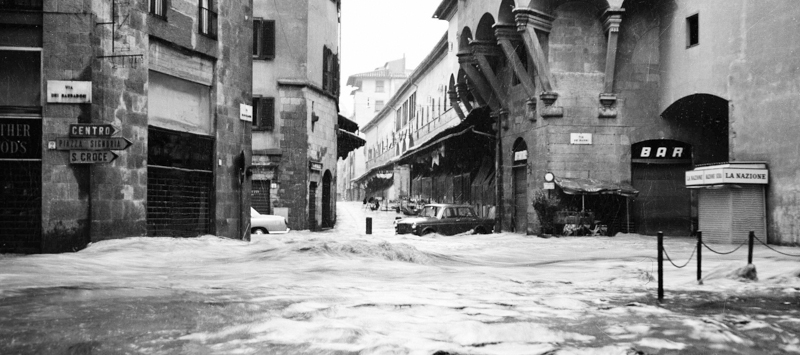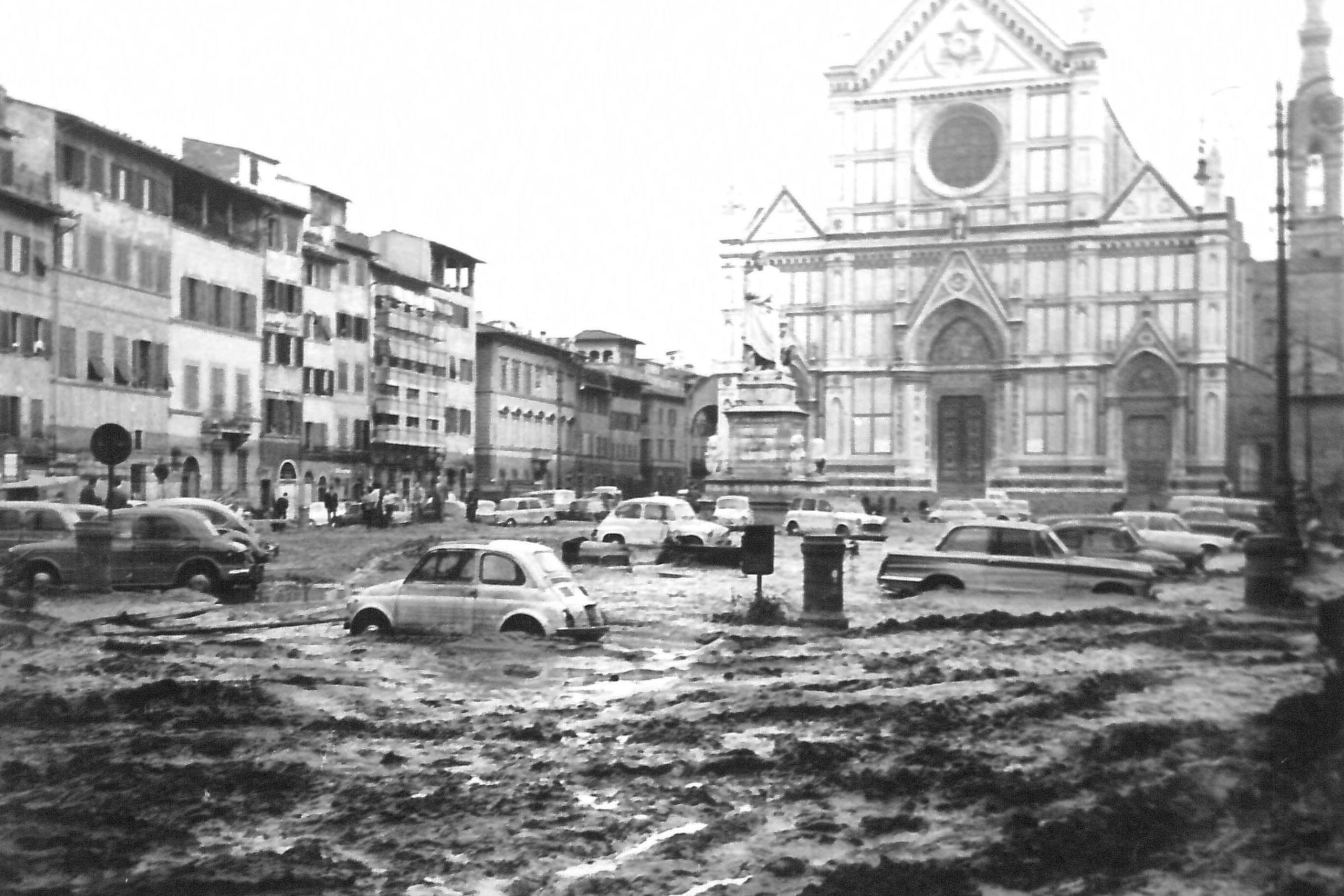"On November 4, 1966, in Florence, the Arno river swollen with dark and muddy waters, poured overwhelming everything in its path.
When the waters calmed down, only destruction enveloped the city."

Dante Alighieri once spoke of the Arno as "the cursed and unfortunate ditch".
About 240 km long is the largest river in Tuscany and the disaster of 1966 was not the first time that its flood caused serious damage in the city.
There are in fact several commemorative plaques on the walls of florence that indicate the water levels of other historical floods, such as those of 1177, 1333, 1557 and 1740.
However, the Florentines, and all the Tuscans, were unprepared for what happened in the flood of 1966.
Chronicle of a disaster
After a day of intense rains, combined with an already saturated soil and with the aggravating factor of urban development, the Arno exonerated Florence in the early hours of November 4; in less than 12 hours the city was invaded by 80 million cubic meters of water: the waters overwhelmed the streets, shops, houses, monuments, people.

That same evening the level began to decrease; however, the devastation was there for all to see. Over 30 dead throughout the metropolitan area, about 20,000 people left homeless and 10,000 homes or premises destroyed.
The Florentines, and not only, were without electricity, drinking water and the streets were littered with animal bodies, rotting food and slime.

Water and mud had poured into museums and churches, devastating paintings, sculptures, manuscripts and other irreplaceable artifacts.
At the National Library, more than 1 million volumes were submerged, as well as numerous and important documents at the State Archives.
At the Baptistery of Florence, the floodwaters caused the panels of the "Gates of Paradise" to fall, the three-ton-high gilded bronze doors designed by the sculptor Lorenzo Ghiberti in the fifteenth century and considered a masterpiece of the Renaissance.
At the Basilica of Santa Croce (church and burial place of Michelangelo and Galileo, among others), a large wooden crucifix made in the thirteenth century by Cimabue lost much of its original painting in the flood, becoming a symbol in spite of it.
The mud angels

After learning of the flood, volunteers came from all over Italy and around the world to help clean up the debris and save what could be saved.
The mud angels were boys without specific training; among them also the director Franco Zeffirelli, who at the time of the flood was working on the film adaptation of "The Taming of the Shrew" (with Elizabeth Taylor and Richard Burton), quickly returned to his hometown to make a documentary on the catastrophe.
The film reportedly earned $20 million in aid for the devastated city.
The Florentines

"It was the radio amateurs who raised the alarm. Headphones and microphone, they thought of calling for help. To coordinate the rescue, at least for the first few hours. To put citizens in contact with the Fire Brigade. To let everyone know, in Florence and Italy, that the situation was very serious. They continued for over sixty hours."
Ordinary people, however, did not lose heart over time in restoring homes and shops; as we often read, the Florentine sarcasm, had resisted...even at the flood.
Some examples.
Several battered trattorias displayed signs saying "today stewed specialties" and shops that were certainly not better placed, always through improvised signs, made it known "incredible discounts, prices under water!" or "We sell unshrinkable fabrics, already wet".
Are there still risks?

Many may think that, having passed more than 50 years, there are no more risks for the city of Florence and its surrounding areas. Unfortunately this is not the case, indeed it has been declared that if the Arno were to replicate a flood like that of 1966 today it would be even more destructive.
image sources: meteoweb, adnkronos, corriere, il post, paese sera, raiplay, toomuchtuscany










 Map
Map